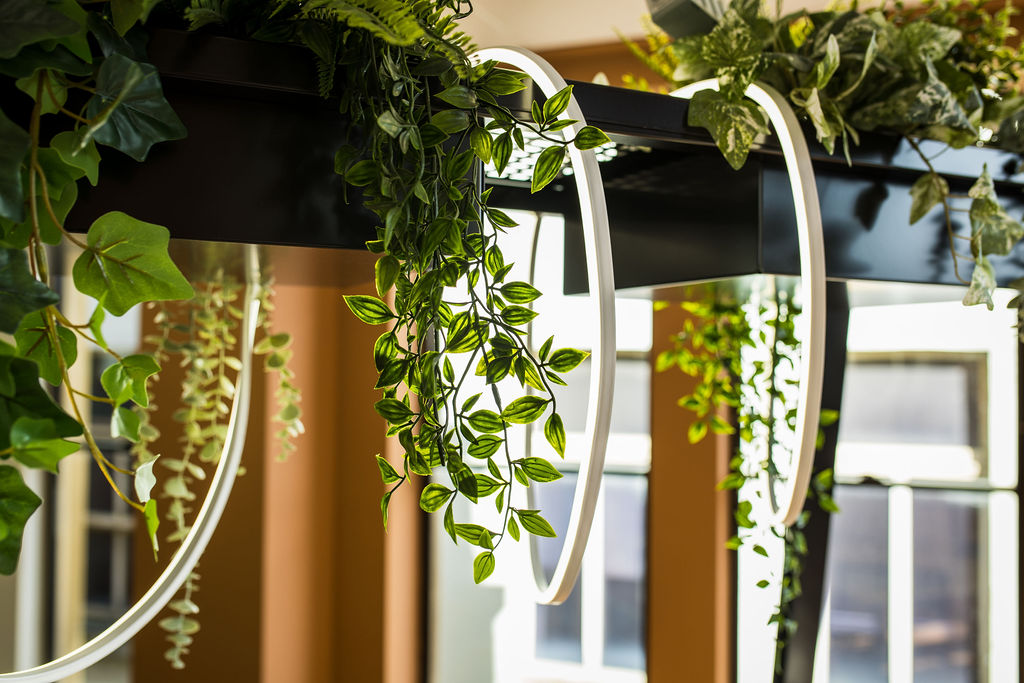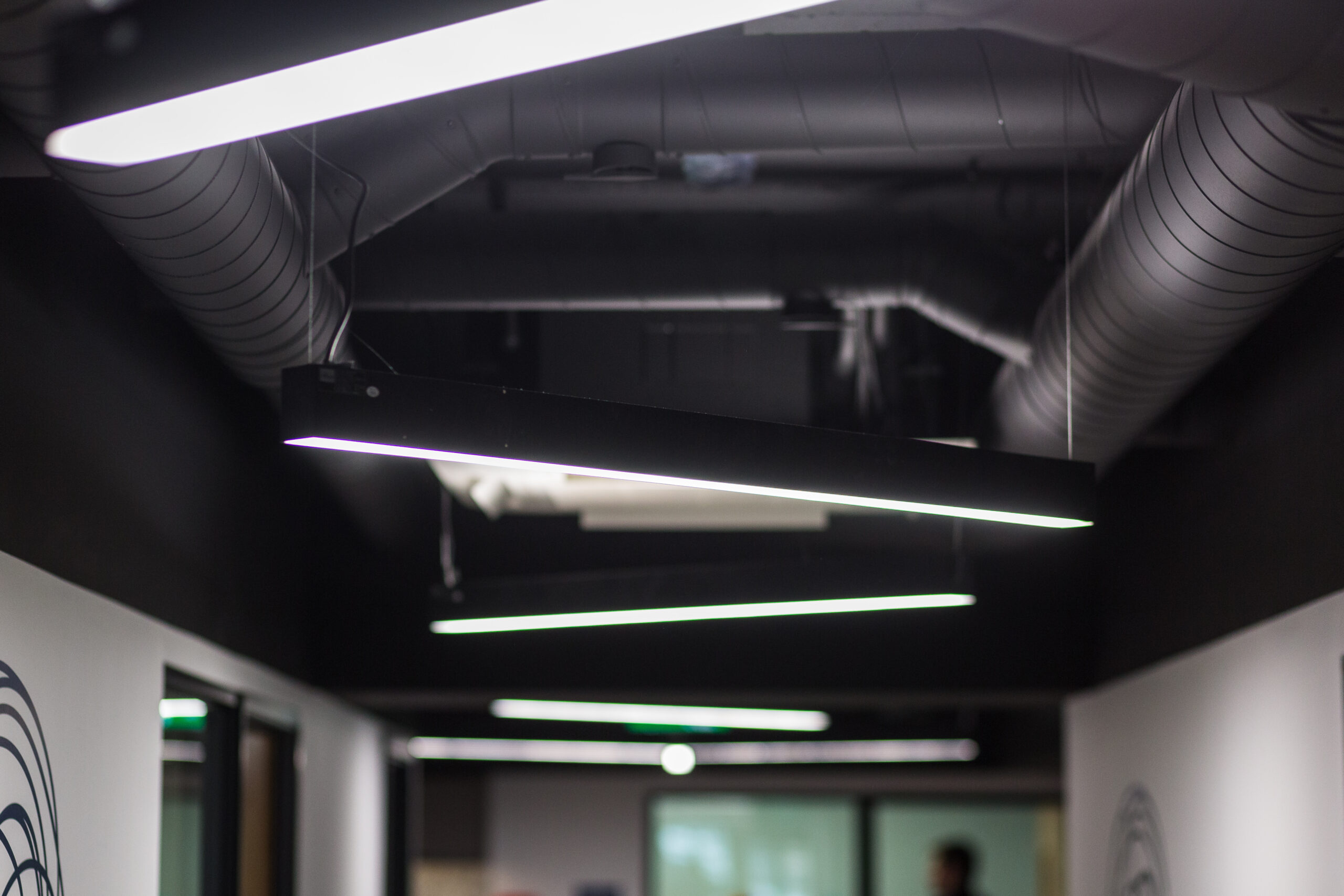Sustainable Office Design: Creating Eco-Friendly Workspaces for the Future
- Carl Brown
- Design Trends, General, Office fit out, Office Fitting
Sustainable office design refers to creating office spaces with a low carbon impact. This is achieved through the use of sustainable materials, repurposing and recycling products, and managing energy consumption to minimise environmental impact. This blog post will explore the principles and benefits of sustainable office design and highlight the importance of adopting green practices in modern office spaces.
Understanding sustainable office design
Sustainability has become a key driver for change across various sectors, including FMCG, fashion, and retail. Companies are increasingly committed to environmentally positive decisions as people make more conscious decisions in their private lives. This shift is evident in the rise of sustainability commitments and net-zero pledges within the business world.
Key elements of sustainable office design
Energy-efficient lighting
Using energy-efficient LED lighting is a simple yet effective way to reduce energy consumption. LEDs consume significantly less power than traditional lighting options and have a longer lifespan, reducing the need for frequent replacements.
Sustainable and recycled materials
Choosing eco-friendly materials is vital for a sustainable office. Specify recycled and natural fabrics, responsibly sourced materials, and FSC-certified wood. Low VOC (volatile organic compound) paints are also essential for improving indoor air quality.
Air quality improvement
Improving air quality with advanced ventilation and filtration systems is crucial for a healthy office environment. Incorporate air-purifying plants to enhance air quality naturally while adding aesthetic value to the workspace.
Reuse and reclaim furniture for sustainable office design
Reusing or reclaiming pre-owned furniture is a cost-effective and sustainable approach. Boardroom tables, chairs, and other office furniture can often be refurbished and reused, reducing waste and saving resources.

Energy-efficient HVAC systems
Implementing energy-efficient heating, ventilation, and air conditioning (HVAC) systems can significantly reduce a building’s carbon footprint. These systems are designed to consume less energy while maintaining optimal indoor climate conditions.
Waste management during construction
Diverting waste from landfill during the construction phase is a critical aspect of sustainable office design. Effective waste management practices include recycling construction materials and minimising waste generation.
Benefits of sustainable office design
Talent attraction and retention
A sustainable office design can enhance a company’s appeal to potential employees. Businesses using their workplaces to demonstrate sustainability commitments can attract and retain the best talent.
Meeting ESG Goals
Sustainable office spaces contribute to corporate ESG (Environmental, Social, and Governance) policies. Creating an ESG-friendly office provides a high-quality environment for employees and helps meet environmental commitments. Office spaces that align with sustainability credentials and accreditations, such as LEED, BREEAM, or WELL, are increasingly valued in the business world.

Reducing operational costs
Sustainable office design often leads to reduced operational costs. Reusing elements like furniture and incorporating energy-efficient solutions such as LED lighting and PIR (passive infrared) sensors for lighting control can lower energy bills. Modern buildings that incorporate renewable energy sources, such as solar panels and rainwater collection systems, further enhance sustainability and cost efficiency.
EPC’s
An EPC (Energy Performance Certificate) rating assesses a building’s energy efficiency. This rating applies to both residential and commercial properties. These ratings are crucial for landlords in the commercial real estate market, as properties must achieve a specific rating before they can be let. Sustainable buildings, often achieving high EPC ratings, are in high demand.
The Minimum Energy Efficiency Standards (MEES) regulations, effective since 2018, mandate that all buildings with existing leases must achieve a minimum EPC rating of E from April 2023. These standards drive efficiency improvements in new and existing properties, contributing to a more sustainable built environment.
Sustainable office design is not just about using recycled materials; it encompasses a comprehensive approach involving sustainable material procurement, efficient project management, and environmentally friendly manufacturing processes. The benefits of sustainable office design include attracting and retaining talent, meeting ESG goals, and reducing operational costs.
As workplaces become more sustainability-conscious, leading organisations invest in low-carbon, eco-friendly office environments. Employees are demanding quality spaces that enhance their wellbeing and minimise environmental impact. While office design and commercial property sectors are integrating more sustainable practices, there is a significant journey ahead to achieve a truly sustainable future.
Sustainability runs through the core of our business. Drop us a line today to discuss your office design, refurbishment or fit out

